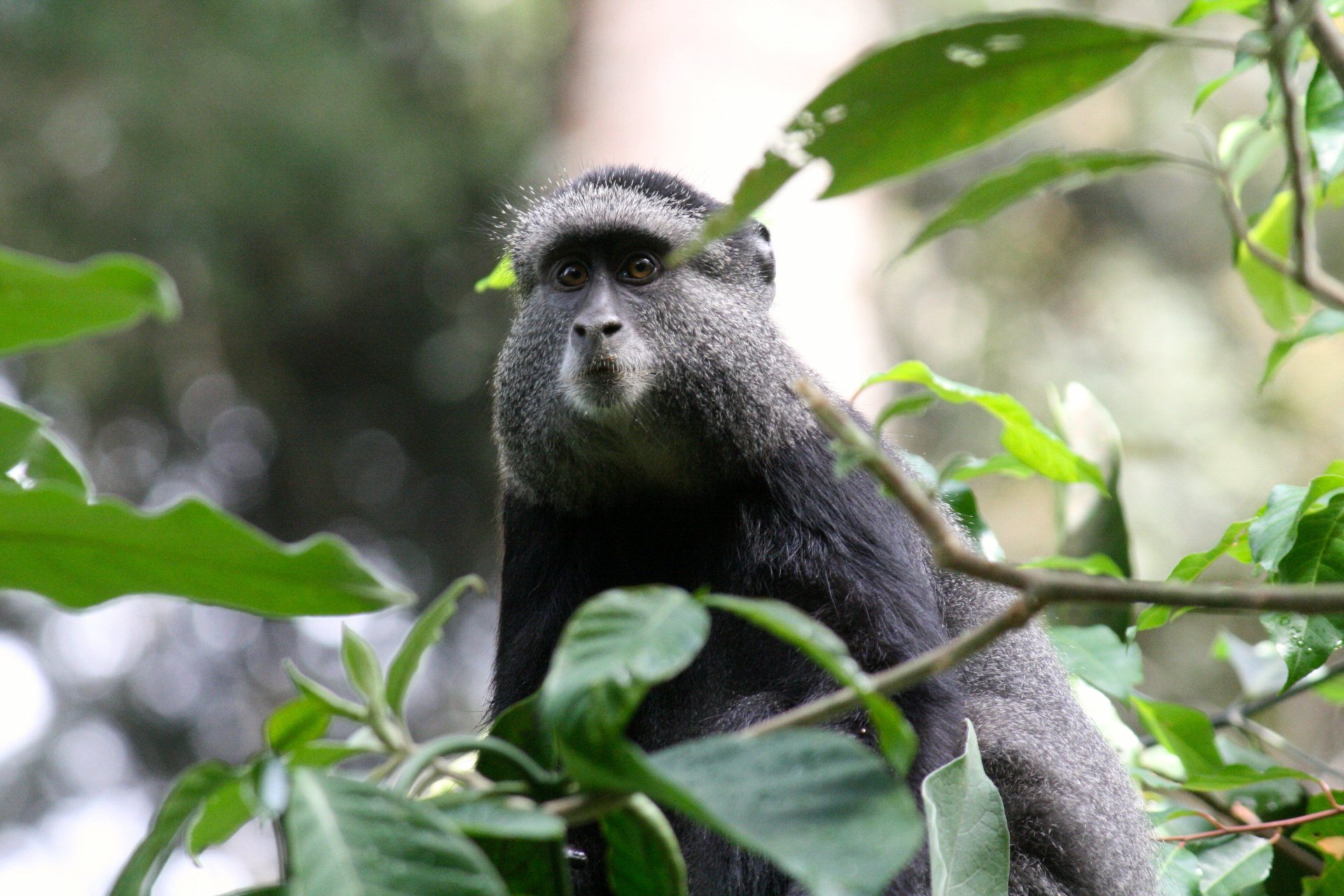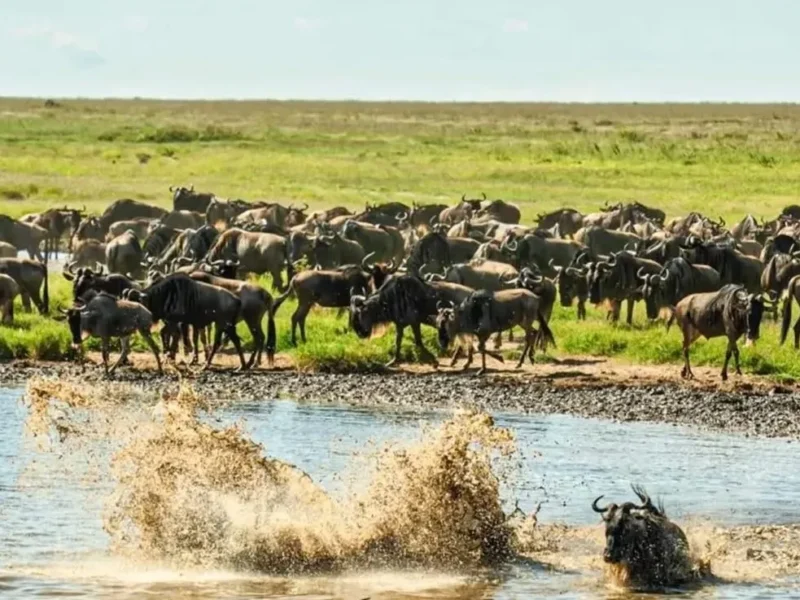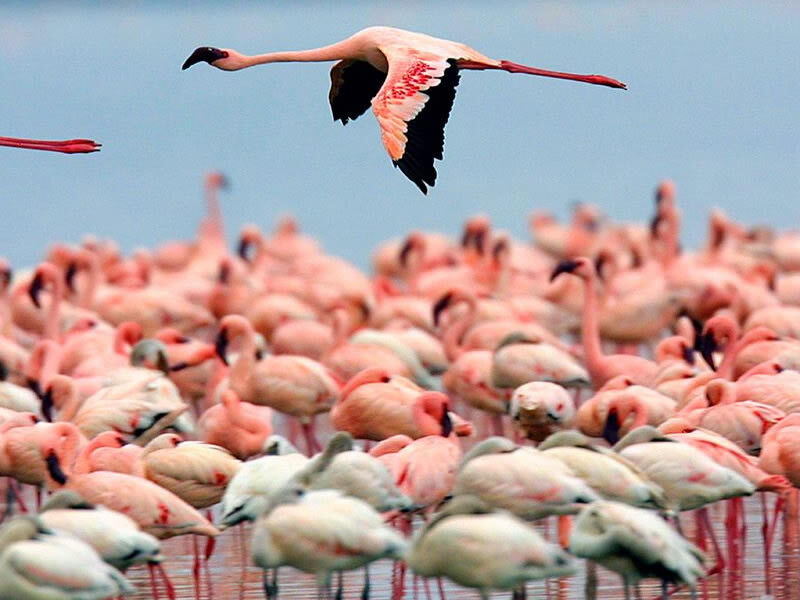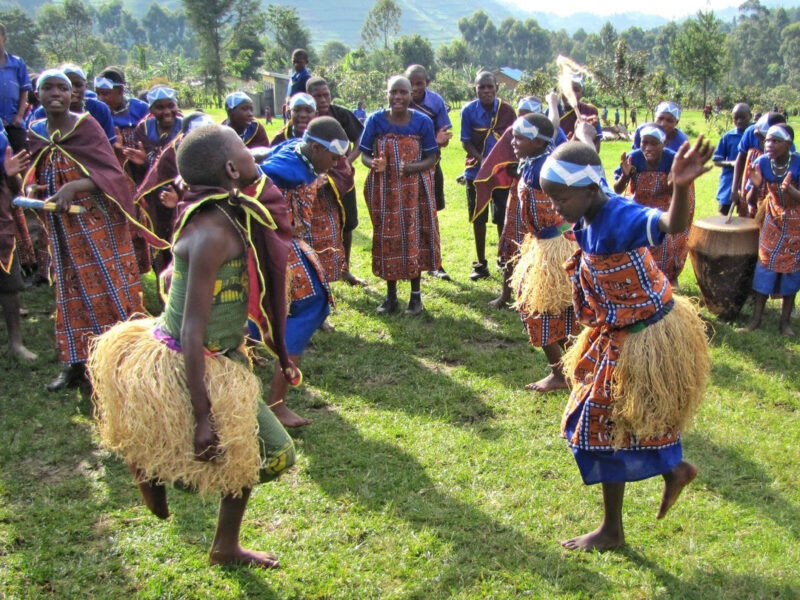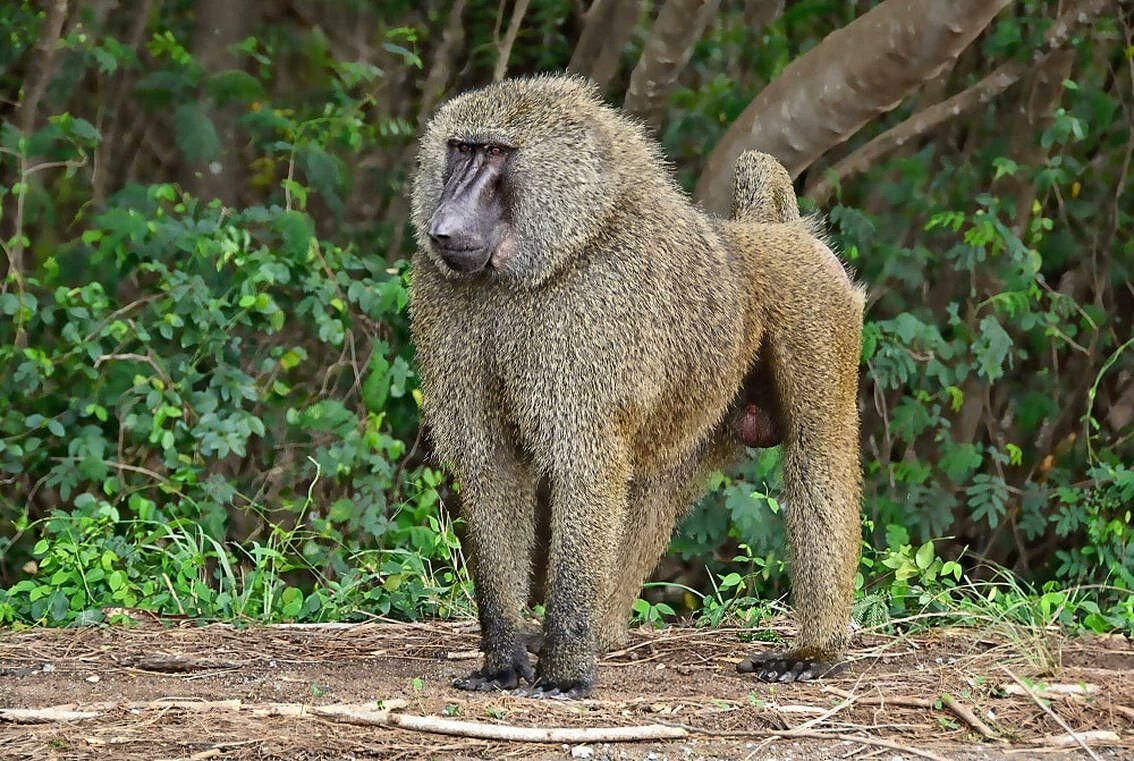
Ugandan Baboon
April 11, 2025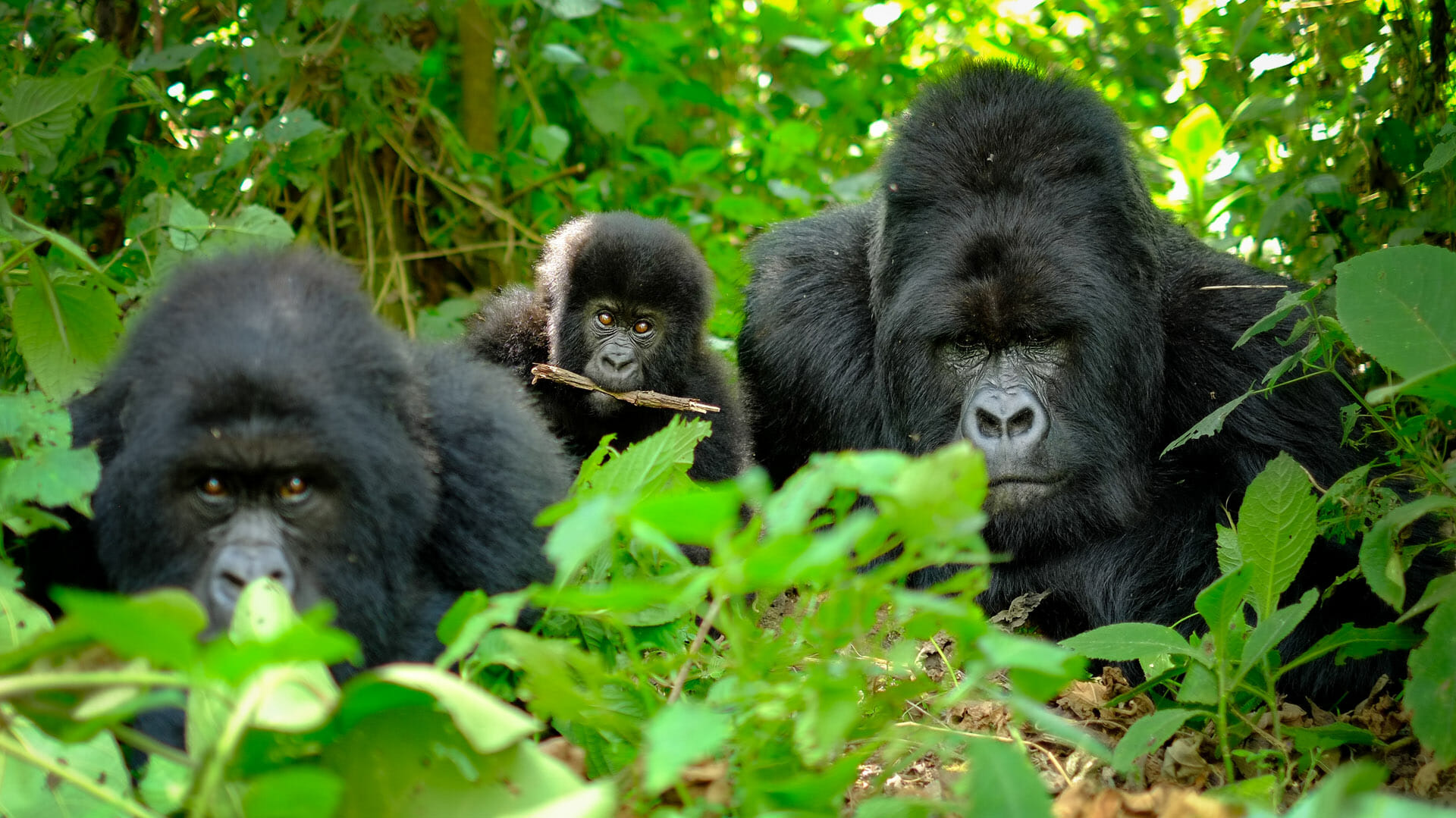
Mountain Gorillas In Rwanda
April 14, 2025The Ugandan Blue Monkey
Also known as the Sykes’ Monkey, is one of Uganda’s most interesting and beautiful primate species. Despite its name, the blue monkey is not truly blue—its fur can appear bluish-grey under certain lighting, but it’s more accurately described as slate-gray to olive with a whitish or yellowish throat and belly. These monkeys are forest dwellers and play a vital role in Uganda’s rich biodiversity.
Here’s a detailed overview of Blue Monkeys in Uganda:
1. Habitat and Distribution
– Preferred Habitat:
Blue monkeys are arboreal, meaning they live mostly in trees. They thrive in:
– Tropical rainforests
– Montane forests
– Riverine forests
– Swampy areas within forests
Where to See Them in Uganda:
They are commonly found in:
– Kibale National Park – Uganda’s primate capital
– Bwindi Impenetrable National Park
– Mgahinga Gorilla National Park
– Budongo Forest Reserve
– Queen Elizabeth National Park (in forested zones like Maramagambo)
2. Physical Description
– Size:
– Body length: 50–65 cm (20–26 inches)
– Tail length: 70–100 cm (28–39 inches), used for balance
– Weight:
– Males: 7–8 kg (15–17 lbs)
– Females: 4–5 kg (9–11 lbs)
– Fur Color:
– Despite the name, they are not vividly blue
– Fur is grayish or slate-blue, sometimes with a bluish tint in the right light
– They have a whitish or yellowish throat, chest, and belly
– Dark limbs, face, and hands
– Face:
– Dark face with whitish eyebrows or a light mask-like appearance
– Large round eyes, expressive and adapted for low light in dense forests
– Distinctive Features:
– Long tail used for balance in trees
– Cheek pouches for temporarily storing food
– Males are noticeably larger than females (sexual dimorphism)
3. Behavior and Social Structure
– Group Living:
– Blue monkeys live in female-centered groups (matrilineal), usually led by one dominant male
– Troop size: 10–30 individuals
– Females stay in their birth groups; males leave when they reach adulthood
– Social Traits:
– Very social and vocal
– Grooming is a key bonding activity
– Often found foraging silently high in the canopy
– Activity Pattern:
– Diurnal (active during the day)
– Spend most of their time in trees (rarely come to the ground)
4. Diet and Feeding Habits
– Diet: Primarily frugivorous (fruit-eating), but also:
– Leaves
– Flowers
– Young shoots
– Insects
– Occasionally small invertebrates
– They are selective feeders and help with seed dispersal, making them ecologically important.
– Feeding Behavior:
– Use cheek pouches to store food while foraging
– Mostly feed in upper canopy, where fruit is abundant
5. Reproduction and Lifespan
– Breeding: No fixed season; can breed year-round
– Gestation: About 5 months
– Offspring:
– Typically one infant per birth
– Infants cling to their mothers for the first few months
– Lifespan:
– Up to 20 years in the wild
– May live longer in captivity
6. Predators and Threats
– Natural Predators:
– Eagles (especially crowned eagles)
– Leopards
– Large snakes
– Defense:
– Alarm calls
– Staying in high forest canopies for safety
– Group cohesion and quick movements
– Human Threats:
– Habitat loss due to deforestation
– Hunting/snaring in some areas
– Occasionally involved in crop-raiding, though not as problematic as baboons
7. Conservation Status
– IUCN Status:
– Listed as Least Concern, but certain subspecies may be at more risk
– Populations are stable in Uganda due to protected forest habitats
– Conservation Measures:
– Protected in Uganda’s national parks and forest reserves
– Conservation initiatives in places like Kibale and Bwindi help preserve their habitat
8. Blue Monkeys in Tourism and Research
– Tourism:
– A highlight of primate walks in Kibale Forest
– Often seen during nature walks, birding tours, and chimpanzee tracking experiences
– Scientific Research:
– Studied for their social systems, foraging strategies, and communication
– Important indicators of forest health

